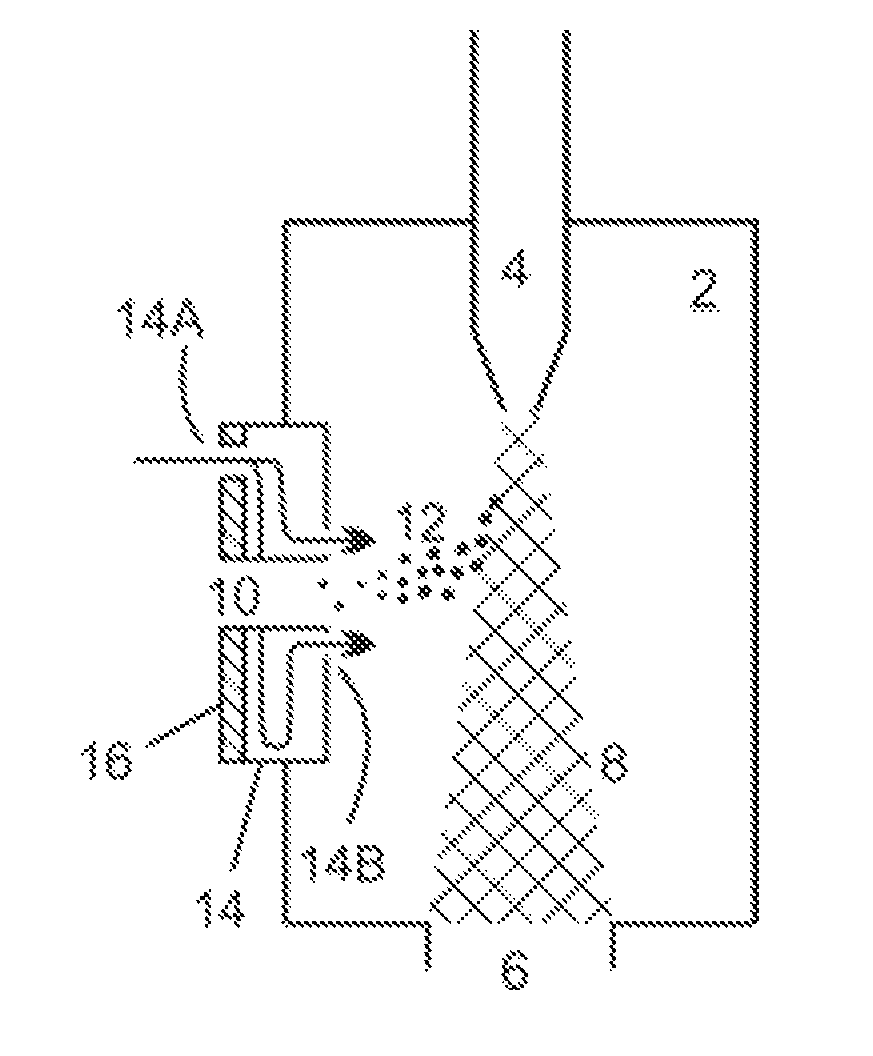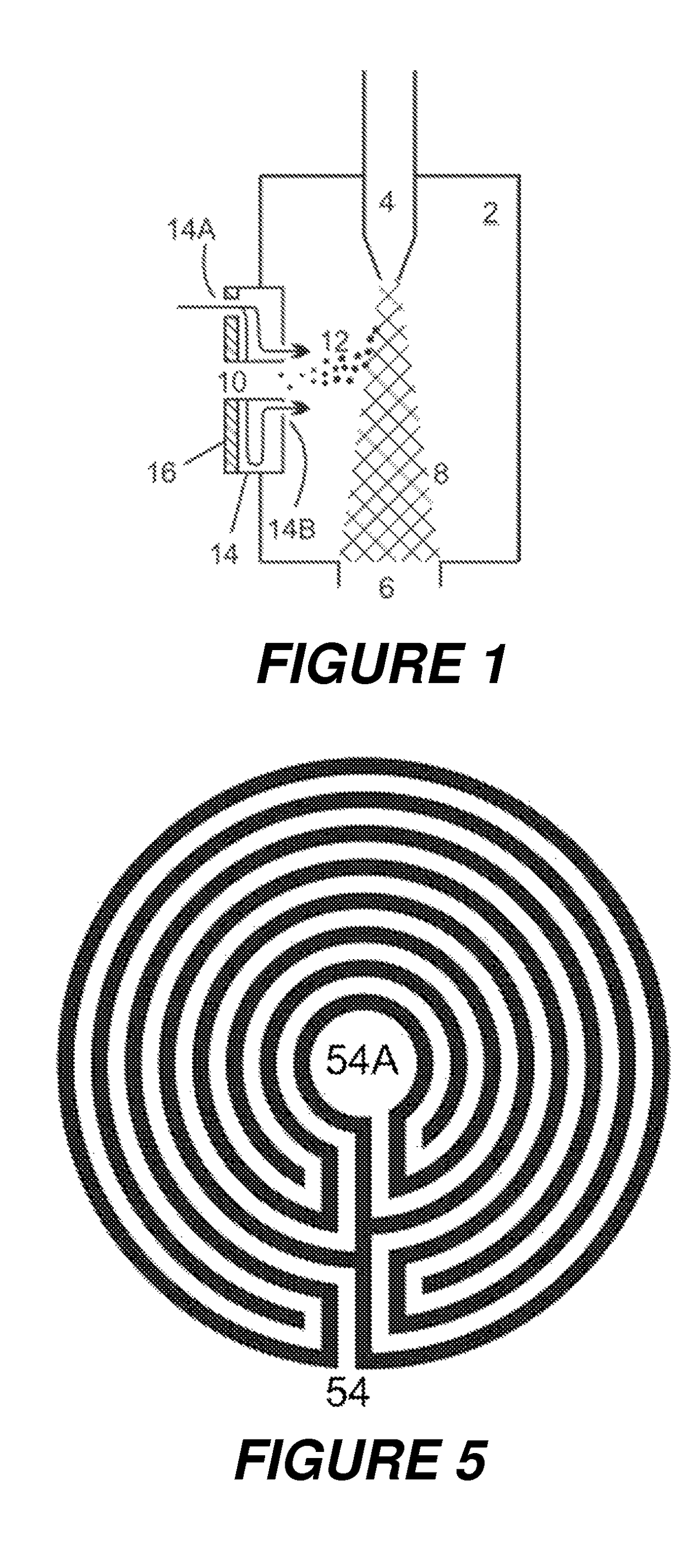Ionization chamber with temperature-controlled gas feed
a technology of ionization chamber and gas feed, which is applied in the direction of glass making apparatus, manufacturing tools, particle separator tube details, etc., can solve the problems of consuming side walls, requiring an enormous amount of work, and limiting the accuracy with which the corners and edges of the structure to be produced can be fabricated, so as to facilitate the monitoring of the temperature-control process, maximize the length of the gas channel, and reduce the effect of temperature changes
- Summary
- Abstract
- Description
- Claims
- Application Information
AI Technical Summary
Benefits of technology
Problems solved by technology
Method used
Image
Examples
Embodiment Construction
[0031]While the invention has been shown and described with reference to a number of embodiments thereof, it will be recognized by those skilled in the art that various changes in form and detail may be made herein without departing from the scope of the invention as defined by the appended claims.
[0032]As has already been mentioned above, the invention proposes an ionization chamber with a temperature-controlled gas feed which is to be connected to a mass spectrometer, said ionization chamber having an advantageously formed temperature-control block for heating or cooling a gas which is to be fed into the chamber. Below, specific example embodiments of ionization chambers with temperature-control blocks are presented in a very schematic way and more to illustrate the general principles, from which the specialist can easily draw conclusions about the scope and the benefit of the new features according to the invention.
[0033]FIG. 1 shows a schematic cross-sectional, lateral view of a...
PUM
| Property | Measurement | Unit |
|---|---|---|
| pressure | aaaaa | aaaaa |
| pressure | aaaaa | aaaaa |
| pressure | aaaaa | aaaaa |
Abstract
Description
Claims
Application Information
 Login to View More
Login to View More - R&D
- Intellectual Property
- Life Sciences
- Materials
- Tech Scout
- Unparalleled Data Quality
- Higher Quality Content
- 60% Fewer Hallucinations
Browse by: Latest US Patents, China's latest patents, Technical Efficacy Thesaurus, Application Domain, Technology Topic, Popular Technical Reports.
© 2025 PatSnap. All rights reserved.Legal|Privacy policy|Modern Slavery Act Transparency Statement|Sitemap|About US| Contact US: help@patsnap.com



